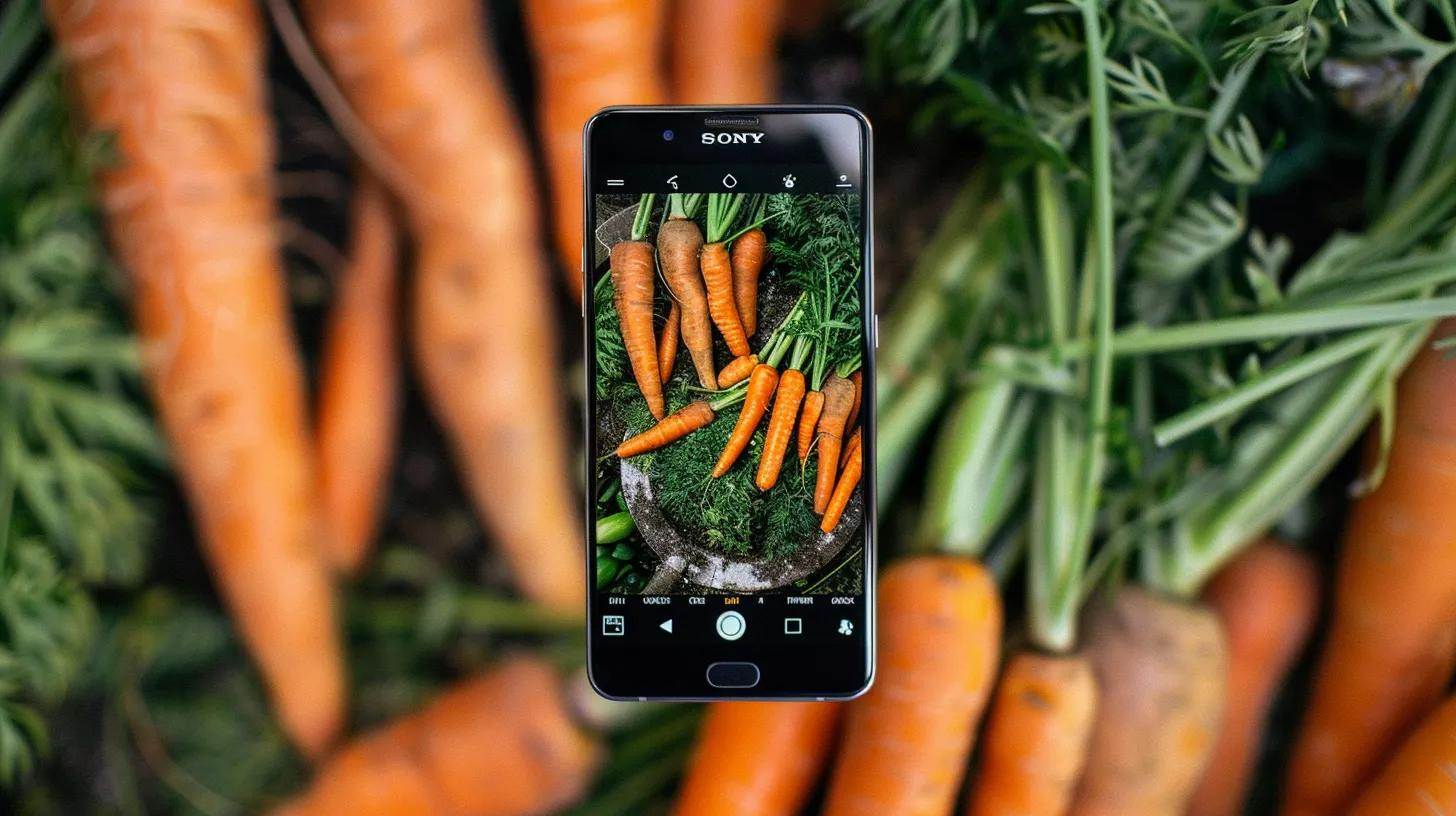Heads Up: When you purchase through links on our site, we may earn an affiliate commission at no cost to you.
Are you struggling to improve your Carrot site’s visibility on mobile search engines? With more users accessing retail websites via their phones, optimizing your mobile SEO is essential. This article will guide you through conducting a mobile SEO audit, implementing responsive design, and enhancing page speed. By addressing common issues and providing actionable solutions, you’ll be better equipped to boost your site’s performance, gain valuable backlinks, and meet web vitals standards—all crucial for achieving higher search rankings. Let’s get started on enhancing your Carrot site’s mobile capabilities today.
Key Takeaways
- Mobile SEO significantly improves user experience and can lead to higher conversion rates.
- Responsive design is essential for adapting your site to various screen sizes and devices.
- Regular site audits help identify issues affecting mobile performance and user engagement.
- Optimizing page speed is crucial for retaining users and reducing bounce rates.
- Using tools like Google Analytics enhances understanding of user behavior and site performance.
Understanding Mobile SEO for Your Carrot Site

Mobile SEO is crucial for enhancing the usability of your Carrot site, as it directly affects your site’s search engine optimization performance. Understanding the key differences between mobile and desktop SEO will help you optimize effectively. Additionally, a focus on mobile usability significantly improves user experience, leading to higher engagement and conversion rates.
Defining Mobile SEO and Its Importance
Mobile SEO focuses on optimizing your Carrot site to provide a seamless experience for users on mobile devices. With more people using smartphones to browse the internet, ignoring mobile SEO can lead to lost revenue, as potential leads may leave your site if it’s not mobile-friendly. Automation tools can help streamline your mobile optimization process, ensuring your site loads quickly and is easily navigable on smaller screens.
An effective mobile SEO strategy involves understanding how CSS impacts the presentation of your site across different devices. Using responsive design is crucial, as it adapts your layout to fit various screen sizes. Performing regular audits of your site allows you to identify issues that may hinder your mobile performance, ensuring you keep your cart and other critical functions user-friendly and efficient:
- Understand the significance of mobile optimization for user experience.
- Implement automation tools for efficient handling of site updates.
- Utilize CSS to enhance the site’s appearance on mobile platforms.
- Focus on reducing load times to boost engagement and conversions.
- Regularly audit your site for potential areas of improvement.
Key Differences Between Mobile and Desktop SEO
Mobile SEO and desktop SEO differ significantly in their approach and execution. When optimizing for mobile, your priority is to enhance accessibility and usability since mobile users expect a smooth experience on smaller screens. For instance, if your Carrot site fails to load quickly or requires extensive scrolling, you risk high cart abandonment rates. Consequently, search engines prioritize mobile-friendly sites, which can boost your brand’s authority in a competitive market.
Another key difference lies in content presentation. While desktop SEO allows for more detailed layouts and larger images, mobile SEO requires concise content that is easily digestible on small devices. Adjustments in formatting and interactive elements are necessary to ensure relevance to mobile users. By focusing on these unique aspects of mobile SEO, you can significantly improve user engagement and drive more leads to your Carrot site:
- Prioritize accessibility in design for mobile users.
- Reduce load times to minimize cart abandonment.
- Ensure content is concise and easily viewed on small screens.
- Focus on enhancing your brand’s authority through mobile optimization.
The Impact of Mobile Usability on User Experience
Mobile usability is a key factor that influences how users interact with your Carrot site. A fast-loading landing page with a clear description of your offerings enhances user experience, making it easier for potential leads to engage with your content. If your site struggles with slow server response times or complex navigation, visitors are likely to leave, which can directly impact your conversion rates.
To improve mobile usability, focus on streamlining your site’s layout and content. For example, use bullet points to provide essential information concisely, such as the benefits of your services or product features. This clear presentation not only caters to mobile users but also strengthens your site’s SEO, making it more attractive to search engines and potential customers alike:
| Mobile Usability Aspects | Importance |
|---|---|
| Fast Loading Times | Reduces bounce rates and improves engagement. |
| Concise Content | Enhances readability and user understanding. |
| Simple Navigation | Helps users find information quickly. |
| Responsive Design | Adapts layout across various devices for optimal viewing. |
- Instant feedback
- Valuable insights
- Actionable tips
Conducting a Mobile SEO Audit for Your Carrot Site

To effectively boost your Carrot site’s mobile SEO, you need to conduct a thorough audit that focuses on key areas. Start by identifying your current mobile performance metrics, which provide insights into how users interact with your content on a mobile device. Next, evaluate the responsiveness and site design to enhance the user interface and ensure it meets the needs of your audience. Finally, analyze mobile page speed and load times, optimizing your content management system with a content delivery network to improve overall performance.
Identifying Current Mobile Performance Metrics
To effectively boost your Carrot site’s mobile SEO, start by identifying current mobile performance metrics to understand how your target audience interacts with your content. Utilize tools like Google Analytics to gather data on user behavior, such as page views, bounce rates, and session duration. This information is essential for tailoring your mobile marketing strategies to meet the needs of real users who visit your site.
As you analyze these metrics, pay attention to conversion rates, specifically how many visitors provide their email addresses or engage with your content. Additionally, understand how link building can drive mobile traffic to your site. By focusing on these critical areas, you can make informed decisions about enhancing your mobile usability, ultimately engaging your target audience more effectively.
Evaluating Responsiveness and Site Design
Evaluating responsiveness and site design is critical for effective lead generation on your Carrot site. Ensure your layout adapts to various screen sizes to offer a smooth user experience, helping prevent potential leads from abandoning their shopping cart due to frustrating navigation. A mobile-friendly design reduces the weight of your pages, leading to quicker load times, which directly impacts your search engine rankings.
Utilizing SEO tools can assist in analyzing how well your site performs across different devices. Check for consistent backlink profiles and ensure that every element, from images to text, effectively supports the goals of your website. Adjusting these aspects not only enhances mobile usability but also creates opportunities for increased engagement and conversion rates:
| Responsiveness Aspect | Importance |
|---|---|
| Adaptive Layout | Supports users on all devices, improving lead generation. |
| Weight Management | Reduces load times for better shopping cart experience. |
| SEO Tool Utilization | Improves backlink analysis and overall performance. |
| Consistent Content Format | Enhances readability and user engagement. |
Analyzing Mobile Page Speed and Load Times
Analyzing mobile page speed and load times is essential for optimizing your Carrot site for maximum effectiveness. A site that loads slowly on mobile devices can frustrate potential customers, leading to higher bounce rates and lower conversion rate optimization. To improve performance, consider utilizing tools that assess load times against the algorithms used by search engines, ensuring you’re meeting the current standards expected of mobile sites.
To enhance user experiences, focusing on project management for updating content delivery networks can significantly reduce loading times. For instance, changing image formats or compressing large files can make your site more responsive on mobile compared to a desktop computer. By prioritizing these adjustments, you can create a seamless browsing experience that keeps customers engaged and increases your conversion rate.
Implementing Responsive Design for Mobile Optimization

Responsive design benefits your Carrot site by enhancing customer experience across all devices. You’ll learn best practices for creating effective, responsive layouts that cater to varying screen sizes and how to implement tools for testing responsiveness. Insights from keyword research and data collection will also inform your strategies to meet core web vitals and boost your site’s performance.
Benefits of Responsive Design for Carrot Sites
Responsive design significantly enhances your Carrot site’s visibility across various devices, allowing you to capture a broader audience. When your web page adapts smoothly to different screen sizes, it fosters a positive user experience, which is critical in retaining potential leads. Implementing responsive layouts also helps improve key analytics metrics like the largest contentful paint, ensuring that your main visual content loads quickly and efficiently, further boosting your SEO performance.
By focusing on responsive design, you can optimize the appearance of thumbnails and other essential visual elements on your Carrot site, ensuring they are appealing and easy to navigate. This attention to detail not only enhances user interaction but also supports your site’s overall SEO strategy. As a result, you will likely see an increase in conversions and the satisfaction of your audience, driving more engagement and fostering loyalty among your users.
Best Practices for Creating Responsive Layouts
When creating responsive layouts for your Carrot site, prioritize a fluid grid system that adjusts seamlessly across various devices. This infrastructure ensures that content scales appropriately, enhancing usability on mobile screens. By optimizing web design with flexible images and media queries, you can significantly improve user behavior, allowing faster access to vital information and increasing the likelihood of conversion.
Furthermore, it focuses on maintaining brand awareness through consistent design elements that remain recognizable across all formats. Utilize clear calls to action and navigational menus that adapt to different screen sizes, fostering a user-friendly environment. Implementing these best practices not only supports your pagerank but also contributes to a more engaging user experience, which ultimately drives traffic and bolsters your SEO efforts:
- Utilize a fluid grid system for layout flexibility.
- Employ media queries for responsive images.
- Ensure navigational elements adjust to screen sizes.
- Maintain consistent branding across devices.
Tools to Test and Ensure Responsiveness
To test and ensure the responsiveness of your Carrot site, employing tools like Google Mobile-Friendly Test can provide immediate insights into your site’s performance on mobile devices. This tool allows you to see how well your content adapts to different screen sizes, making it easier to identify areas that need improvement. If your primary goal is to enhance user engagement during their online shopping experience, swift identification and resolution of these issues can prevent potential cash losses due to high bounce rates.
Another valuable resource is BrowserStack, which offers you the ability to test your site on real mobile devices across various platforms. By simulating different scenarios, you can see firsthand how well your content creation efforts translate on smaller screens. This hands-on approach helps you refine your design, ensuring that every element— from product images to navigation menus— functions effectively and fosters a seamless experience, planting the right seed for increased conversions and customer loyalty.
Enhancing Mobile Page Speed on Your Carrot Site

Enhancing mobile page speed on your Carrot site involves several practical techniques. Start by reducing image sizes to ensure faster load times on mobile devices. Next, minimize HTTP requests to streamline content delivery. Finally, browser caching and compression should be utilized to improve performance. Each of these strategies is vital for providing a seamless user experience and optimizing your site’s mobile SEO.
Techniques to Reduce Image Sizes for Mobile
To reduce image sizes for your Carrot site, consider using image compression tools that maintain quality while lowering file size. Tools like TinyPNG or JPEGmini can streamline your images without noticeable loss, which directly enhances loading times on mobile devices. Implementing these tools is a straightforward method to boost mobile page speed, ensuring visitors have a more pleasant experience on your site.
Another effective technique is selecting the appropriate image formats. For instance, choosing WebP images can significantly reduce file sizes compared to traditional formats like JPEG or PNG. By optimizing your image formats and leveraging these practical strategies, you’ll improve your Carrot site’s mobile SEO, leading to better engagement and increased chances of converting leads into customers.
Minimizing HTTP Requests for Faster Loads
Minimizing HTTP requests is crucial for enhancing mobile page speed on your Carrot site. Each time a user visits your site, their device sends requests for images, scripts, and stylesheets. Reducing the number of these requests by combining files, using CSS sprites instead of multiple image files, or employing lazy loading techniques can significantly speed up load times, directly impacting user experience and engagement.
Implementing these strategies improves your site’s speed and helps with mobile SEO, which is vital for attracting and retaining leads. A faster-loading site boosts your search rankings, as search engines favor pages that offer seamless experiences on mobile devices. By focusing on minimizing HTTP requests, you’re taking an essential step toward creating a more efficient and user-friendly Carrot site.
Utilizing Browser Caching and Compression
Utilizing browser caching is a key strategy for enhancing the mobile page speed of your Carrot site. By storing elements of your web pages locally in users’ browsers, you reduce the need for repeated requests for the same files. This ensures that when returning visitors access your site, they experience significantly faster load times, which improves overall user satisfaction and can lead to higher conversion rates.
Compression techniques also play a vital role in optimizing your Carrot site’s mobile performance. By compressing files such as CSS, JavaScript, and images, you minimize their size, allowing them to load more quickly on mobile devices. Implementing Gzip compression, for instance, can substantially decrease file sizes, contributing to faster loading times and a better experience for your mobile users:
| Technique | Benefit |
|---|---|
| Browser Caching | Speeds up load times for returning users. |
| File Compression | Reduces file sizes for quicker loading. |
Optimizing Content for Mobile Users

Optimizing content for mobile users involves crafting mobile-friendly headings and text that grab attention while ensuring readability. Structuring content for quick scannability helps users find essential information without hassle. Additionally, integrating click-to-call and location features makes it easier for visitors to connect with you directly. These strategies will enhance user experience and boost your Carrot site’s mobile SEO performance.
Crafting Mobile-Friendly Headings and Text
When crafting mobile-friendly headings and text for your Carrot site, remember that clarity is key. Make sure your headings are concise and descriptive to help mobile users quickly understand the content of each section. For example, instead of a lengthy title like “An In-Depth Exploration of Our Real Estate Services,” consider simplifying it to “Our Real Estate Services.” This approach not only enhances readability but also improves SEO by featuring relevant keywords naturally.
In addition to using clear headings, focus on creating text that is easy to scan and digest on mobile devices. Short paragraphs, bullet points, and bolded keywords assist in guiding the reader’s attention to the most important information. Implementing features like click-to-call can also facilitate immediate communication, making it easier for potential leads to connect with you directly. Consider this strategy a crucial part of optimizing your content for mobile users:
| Heading Strategy | Benefit |
|---|---|
| Concise Headings | Improves clarity and readability, boosting SEO. |
| Short Paragraphs | Enhances scannability and user engagement. |
| Click-to-Call Features | Facilitates immediate connections with potential leads. |
Structuring Content for Quick Scannability
To enhance quick scannability on your Carrot site, structure your content with clear headings and short paragraphs. This approach allows mobile users to identify sections that matter most to them easily. For example, breaking down detailed information into digestible chunks encourages readers to engage further with your offerings rather than skipping over content due to lengthy paragraphs.
Incorporate bullet points and relevant keywords throughout your text to highlight essential information and optimize for search engines. Clear calls to action, such as “Contact Us” or “Get a Quote,” should be prominent and easy to find. This strategy not only meets user needs for quick access to information but also boosts your site’s mobile SEO performance, driving more leads to your business.
Integrating Click-to-Call and Location Features
Integrating click-to-call features on your Carrot site is an effective way to enhance mobile user experience. This allows potential leads to connect with you directly by simply tapping a button, streamlining communication and increasing the likelihood of engagement. By making it easy for users to reach out, you address their need for immediate contact, which can significantly improve your conversion rates.
In addition to click-to-call, incorporating location features can guide users to your physical office or properties for sale. By using geolocation tools, you enable visitors to find directions easily, making your services more accessible and user-friendly. This practical addition not only boosts user satisfaction but also contributes positively to your site’s mobile SEO, as search engines favor locations that enhance user experience.
Testing and Monitoring Mobile SEO Performance

Tracking key mobile SEO metrics is essential for understanding how well your Carrot site performs on mobile devices. Tools for monitoring mobile usability can provide insights into user behavior, helping you identify areas for improvement. Adapting strategies based on analytics data ensures that your SEO efforts remain effective and aligned with mobile users’ needs, ultimately boosting engagement and conversions.
Tracking Key Mobile SEO Metrics
Tracking key mobile SEO metrics is essential to understanding your Carrot site’s performance on mobile devices. Metrics such as page views, bounce rates, and session duration provide insights into how users interact with your content. Using tools like Google Analytics allows you to gather valuable data that can inform your optimization efforts and help you create a more engaging experience for mobile users.
By regularly monitoring your conversion rates, you can see how effectively your site converts visitors into leads. Identifying trends in user behavior, such as specific pages with high drop-off rates, will help you address potential issues and improve overall mobile usability. Implement the following steps to enhance your mobile SEO performance:
- Utilize Google Analytics to track page views and session duration.
- Monitor bounce rates to identify problem areas.
- Analyze conversion rates to evaluate effectiveness.
- Adjust strategies based on user behavior insights.
Tools for Monitoring Mobile Usability
To effectively monitor your Carrot site’s mobile usability, consider utilizing tools like Google Search Console and GTmetrix. These platforms offer valuable insights into your site’s performance metrics, including loading speed and user engagement on mobile devices. For instance, you can identify which pages are underperforming and require optimization, ensuring that your visitors enjoy a seamless experience, which is essential for capturing potential leads.
Another excellent resource is Google’s Mobile-Friendly Test, which evaluates how easily a visitor can use your site on a mobile device. This tool provides a straightforward report on any issues that may hinder mobile usability. By addressing these issues, you enhance user satisfaction and improve your site’s ranking in search results, positioning your Carrot site for better visibility and engagement in a competitive market.
Adapting Strategies Based on Analytics Data
To improve your Carrot site’s mobile SEO, begin by regularly analyzing metrics gathered from tools like Google Analytics. Look for patterns in user behavior, such as high bounce rates or low session durations on specific pages. By identifying these trends, you can make informed adjustments to your site’s content and layout, ultimately enhancing user engagement and satisfaction.
Once you have this data, implement targeted strategies to address the identified issues. For instance, if certain pages have a high drop-off rate, consider revising the content to make it clearer or more engaging. Additionally, optimizing load times for those specific pages can significantly reduce frustration among mobile users, leading to a better overall experience:
- Use Google Analytics to track user behavior.
- Identify pages with high bounce rates.
- Adjust content for clarity and engagement.
- Optimize page load times for better user experience.
Conclusion
Boosting your Carrot site’s mobile SEO is essential for capturing leads and enhancing user experience in today’s digital marketplace. Prioritizing mobile optimization improves accessibility, speeds up loading times, and ensures clear content presentation, all of which drive user engagement. By regularly auditing your site and implementing responsive design, you can significantly enhance user satisfaction and conversion rates. Take action now to optimize your mobile presence, as a well-performing mobile site can make a substantial difference in your success as a real estate investor.














